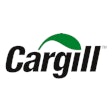Feed & Grain’s editor Jackie Roembke sat down for an informal discussion with Elizabeth Hund, senior vice president and division head of U.S. Bank Food Industries, to discuss the current state of global credit markets and strategies borrowers can implement to better manage their risk.
Feed & Grain: In your opinion, what trends are influencing the credit market?
Elizabeth Hund: Right now, the largest issue is what’s going on in Europe — particularly the impact of the European financial crisis on Euro banks and their ability to make capital available in the United States. We have a lot of international banks that are in this market and as they are under stress in their home country, they’re going to bring their resources back to Europe versus deploying them in the United States. We’ve seen a lot of that in the last six to nine months. It will put more pressure on domestic banks to fill the gap for large borrowers who need a large credit line.
If you’re looking at general financing, the banks in the United States are in better shape than they were a couple of years ago. I think the banks have money to lend to strong companies. In general, the grain and feed industries are in good shape. These are credit worthy borrowers — it’s the euro banks that have drawn back.
When you look at managing the supply chain — if you look at a bank as suppliers of credit —you need a mix of domestic and internal banks because you’re never sure of who will be able to supply you with sufficient capital. Where the shift is now is away from international and back to domestic, but this could change as Europe addresses their sovrgn debt issue.
F&G: To prove you are credit worthy, what should you be doing?
Hund: First of all, I think the industry in good shape. Most of the feed and grain companies have strong and liquid balance sheets. They are not carrying a lot of term debt. I think that’s the first thing. In terms of demonstrating credit worthiness, you have to have the ability to manage what is by nature a volatile industry, by maintaining a strong balance sheet.
You do that by having very little long-term debt; using the futures markets when applicable; and by staying liquid. For example, three or four years ago when grain went up, and corn was at $7, $ 8 dollars a bushel, you had companies needing to increase lines of credit quickly to meet margin calls. You don’t see that today — in part because grain hasn’t reached those highs in awhile and — because the banks and the companies are in better shape to handle it. Nobody wants to be put in that position. Credit lines are larger than historically has been the case, and the banks are more tuned into how to handle temporary changes if needed. I just don’t see the short-term pressure that we saw three years ago.
F&G: From a bank's perspective, give me an example of a company who isn’t in the best position, what would they be doing wrong?
Hund: I think where people get in trouble, all of us in the industry, whether we’re lenders or borrowers is when we start taking a short-term view vs. a long-term view… When we start managing for the next 30 days, the next 90 days, the next crop cycle etc. The industry is getting much more global and grain is leaving the country and that’s a good thing for the domestic industry. When you only look at, ‘Oh, the price of corn is up today, and it should be up for the next 30 days; therefore, I’m going to make this decision or that decision…’ — that’s problematic. We are no longer a domestic business. We are driven by things happening worldwide — whether it’s weather, politics, some kind of a man-made crisis, like the Euro crisis or a foodborne illness. All of those issues drive our market and it’s no longer about what’s the demand for feed and grain in the United States. This requires companies to change their entire frame of reference.
F&G: If you were going to list a few risk management strategies for borrowers, what would they be?
Hund: I think companies that do this well have certain characteristics. They dedicate resources to risk management. You will hav e a staff that looks at all types of risk — volatility in price, supplier or counterpart risk — the people who do it very well have dedicated resources toward it.
They have board awareness and accountability at the board level for policies around risk management.
They usually have a written risk management policy. It will have leeway in it so if they are involved in trading or using futures market there is room for same time decision making but there are policies and guidelines that are monitored and enforced at the board level.
You’re seeing a lot more scrutiny regarding counterparty risk. Who’s buying this product, what are their resources and how are they paying me? and who are my suppliers? Since we’re talking banks, whether it’s your bank or the person taking your trade — MF Global is a perfect example of this. There was counterparty risk at MF Global. People assumed that their deposit accounts were covered and if it was handled properly those accounts should have been segregated. It didn’t work out that way, and people were hurt. It was a wake-up call for knowing your counterparty.
From a banking standpoint, do I have more than one bank? Is my bank knowledgeable about my industry? Is it sound? Is it domestic or foreign? What if I’m doing fine but my bank is under stress and can’t provide me with the credit facilities that I need? What do I do then?
To me, risk management is very broad. Companies that manage this well manage all aspects of it. It demonstrates discipline about looking at this industry in the long view, and knowing there will be downturns and run ups in the market, but being disciplined about it so your balance sheet can be relatively stable.
F&G: For the banks a company has an existing relationship with, how do you vet or review that its still a good fit for your business?
Hund: I think the client has the right to know, and I think it is appropriate to ask to see their balance sheet. Ask how they did on the stress test — because banks are now being asked by go through these exercises with the OCC regarding the strength of their balance sheet. I think it is perfectly appropriate to ask what their public ratings are, if they are a publicly rated bank. What are your lending policies? What percentage of your portfolio is made up of my industry? If you’re the only grain client a bank has, how well will they be able to understand and address market changes? It’s OK for customers to ask for banks to demonstrate their strength. As a banker, I would encourage customers to do that.
F&G: Any final thoughts?
Hund: It’s a good time in the grain and feed industry, but it’s also a challenging time. I’m more bullish than I have been in a long time. I think it’s become a global industry and that’s good for all of us.

















